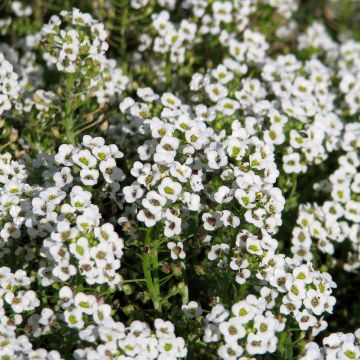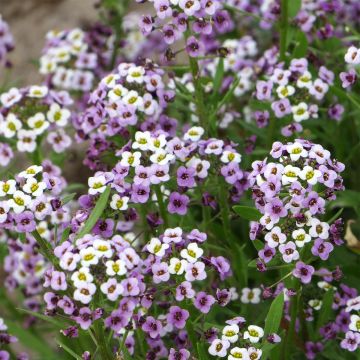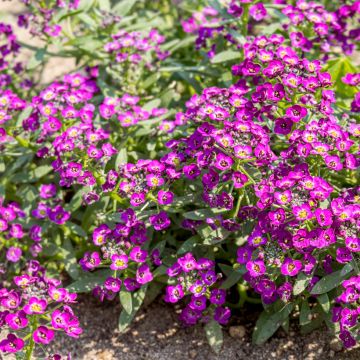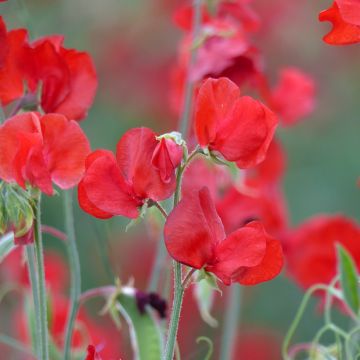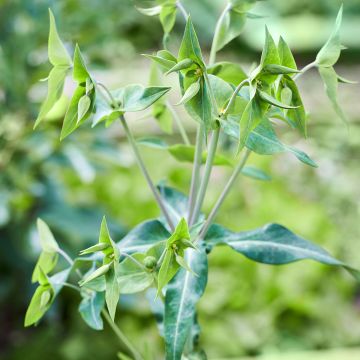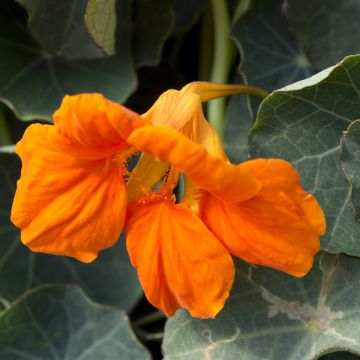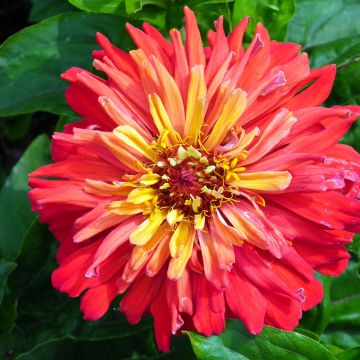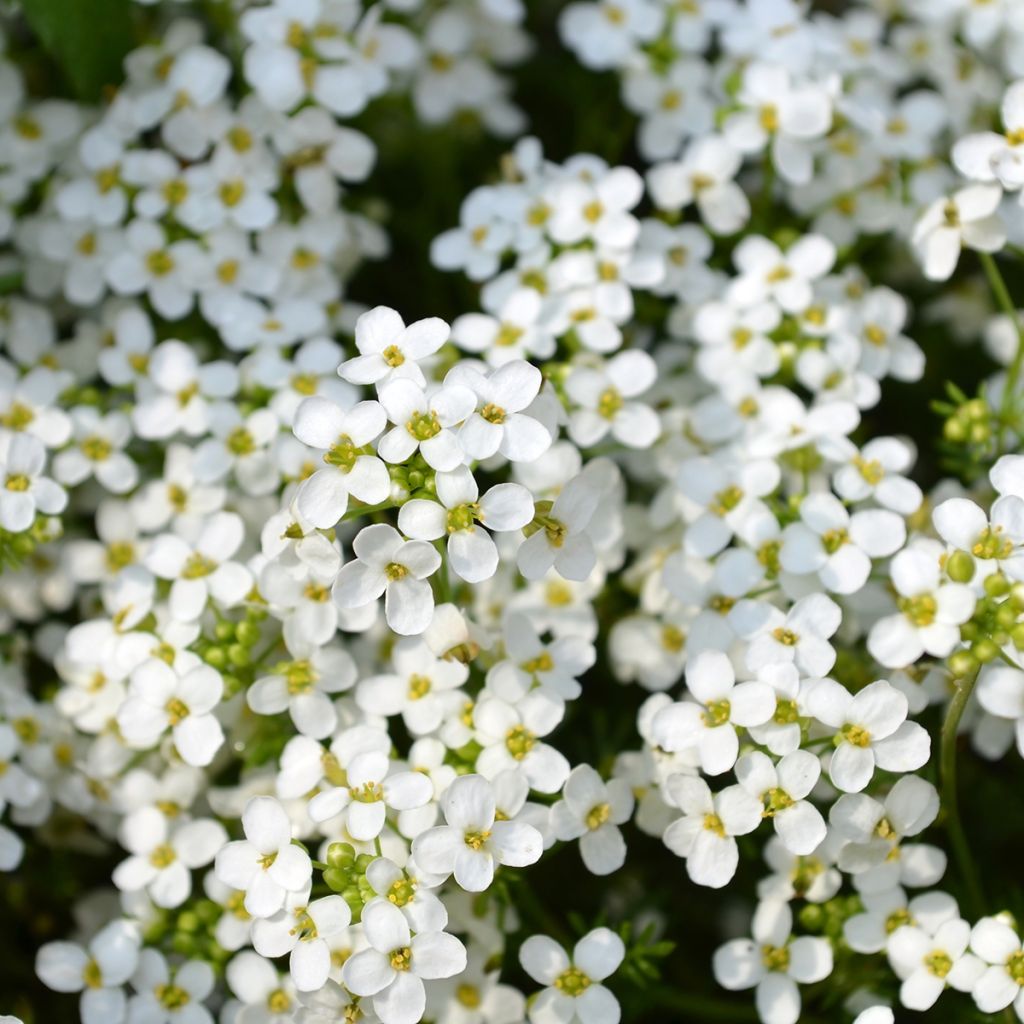

Lobularia maritima Sweet White - Sweet Alyssum
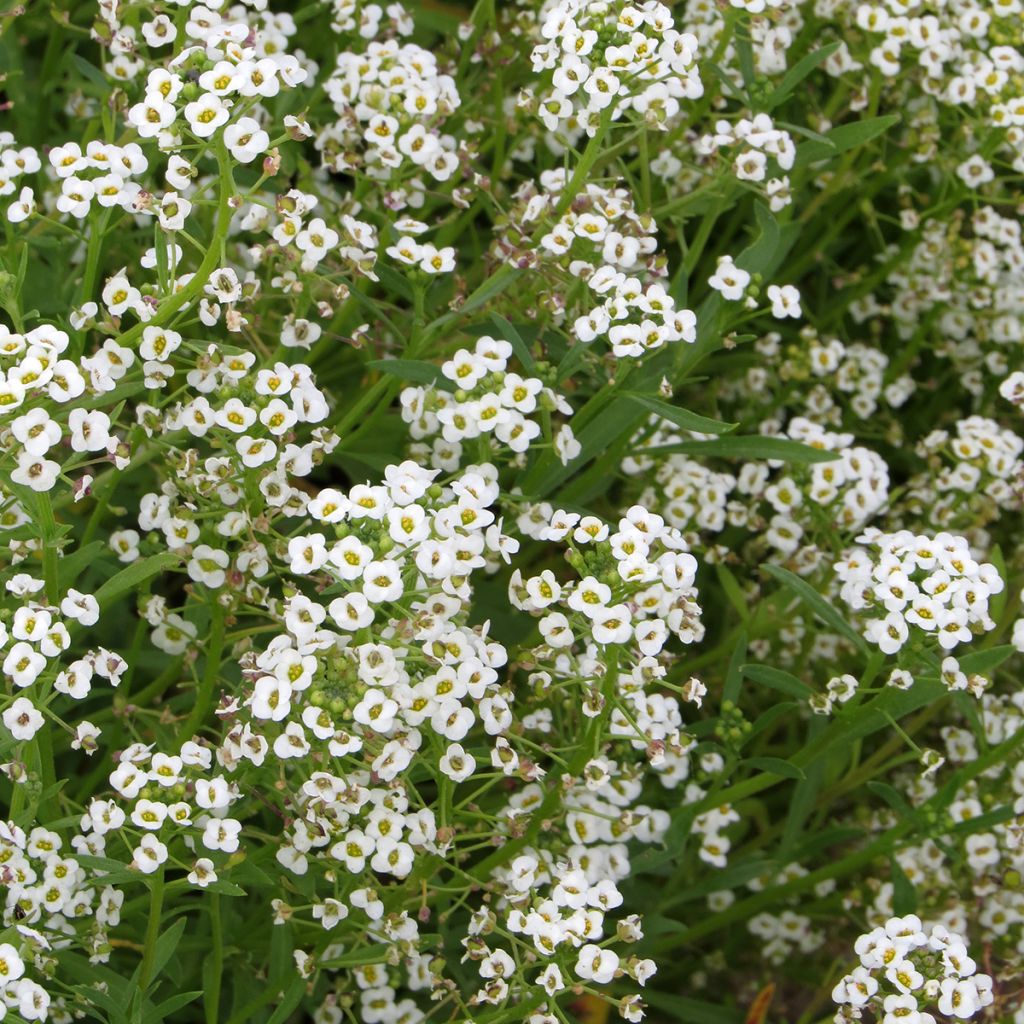

Lobularia maritima Sweet White - Sweet Alyssum
Lobularia maritima Sweet White - Sweet Alyssum
Lobularia maritima procumbens Sweet White
Sweet Alyssum
This item cannot be shipped to the selected country
Dispatch by letter from €3.90
More information
Schedule delivery date,
and select date in basket
This plant carries a 6 months recovery warranty
More information
We guarantee the quality of our plants for a full growing cycle, and will replace at our expense any plant that fails to recover under normal climatic and planting conditions.
Seed-only orders are dispatched by sealed envelope. The delivery charge for seed-only orders is €3.90.
Does this plant fit my garden?
Set up your Plantfit profile →
Description
Lobularia maritima procumbens or Alyssum Sweet White, also known as Sweet Alyssum, is a beautifully scented variety with a spreading habit, forming dense cushions in a year. This hardy annual offers a delightful honey scent that hovers over blankets of delicate white flowers, completely masking the foliage. It is perfect for rockeries and flower pots. It is also a robust and sturdy plant, resistant to harsh weather conditions and sea spray, making it very useful in coastal areas and dry gardens. It thrives in sunny, well-drained soil, even poor and chalky soil.
Sweet Alyssum is an annual plant belonging to the family Brassicaceae, native to southern Europe and the Mediterranean region. This plant is widely cultivated in gardens and has given rise to numerous horticultural varieties. Alyssum Sweet White forms woody-based herbaceous clumps in the year following sowing, reaching a height of 15 cm (6in) and a width of 25 cm (10in). Initially resembling a weed, it then transforms into an imposing clump of branched stems, adorned with glaucous green, alternate, simple, and entire leaves, which are narrow (from lanceolate to linear) and somewhat villous. The flowering period extends from June to September, completely covering the plant with small white flowers that emit a delightful honey fragrance.
Underutilised in gardens, Sweet Alyssum thrives in well-drained soils. It is perfect for covering the tops of walls, the spaces between rocks in rockeries, and at the base of perennials and drought-tolerant shrubs such as rock roses, shrubby salvias, lavenders, or rosemary. They can also be planted along pathways in well-drained soil. Sweet Alyssum also performs well in containers and flower beds.
Report an error about the product description
Flowering
Foliage
Plant habit
Botanical data
Lobularia
maritima procumbens
Sweet White
Brassicaceae
Sweet Alyssum
Cultivar or hybrid
Other Alyssum seeds
Planting and care
Sow Alyssum seeds from late March to May, at 15-29°C (59 to 84.2°F), on the surface of good quality soil. Keep the soil moist but not waterlogged and keep the sowing in the light. Place in a mini greenhouse, or enclose the seed tray in a polyethylene bag until germination, which takes between 7 and 30 days. When the plants are large enough to handle, transplant and grow them in cooler conditions until they are big enough to be planted outside. When the plants are well-developed and the risk of frost has passed, begin hardening them to outdoor conditions for 7 to 10 days. Transplant outside, in full sun, in sandy or gravelly, well-drained, light soil, with each plant being planted at a distance of 30cm (12in).
Alternative: sow Alyssum outside in May, directly in open ground, in well-prepared and well-aerated soil.
Sowing period
Intended location
This item has not been reviewed yet - be the first to leave a review about it.
Flower seeds
Haven't found what you were looking for?
Hardiness is the lowest winter temperature a plant can endure without suffering serious damage or even dying. However, hardiness is affected by location (a sheltered area, such as a patio), protection (winter cover) and soil type (hardiness is improved by well-drained soil).

Photo Sharing Terms & Conditions
In order to encourage gardeners to interact and share their experiences, Promesse de fleurs offers various media enabling content to be uploaded onto its Site - in particular via the ‘Photo sharing’ module.
The User agrees to refrain from:
- Posting any content that is illegal, prejudicial, insulting, racist, inciteful to hatred, revisionist, contrary to public decency, that infringes on privacy or on the privacy rights of third parties, in particular the publicity rights of persons and goods, intellectual property rights, or the right to privacy.
- Submitting content on behalf of a third party;
- Impersonate the identity of a third party and/or publish any personal information about a third party;
In general, the User undertakes to refrain from any unethical behaviour.
All Content (in particular text, comments, files, images, photos, videos, creative works, etc.), which may be subject to property or intellectual property rights, image or other private rights, shall remain the property of the User, subject to the limited rights granted by the terms of the licence granted by Promesse de fleurs as stated below. Users are at liberty to publish or not to publish such Content on the Site, notably via the ‘Photo Sharing’ facility, and accept that this Content shall be made public and freely accessible, notably on the Internet.
Users further acknowledge, undertake to have ,and guarantee that they hold all necessary rights and permissions to publish such material on the Site, in particular with regard to the legislation in force pertaining to any privacy, property, intellectual property, image, or contractual rights, or rights of any other nature. By publishing such Content on the Site, Users acknowledge accepting full liability as publishers of the Content within the meaning of the law, and grant Promesse de fleurs, free of charge, an inclusive, worldwide licence for the said Content for the entire duration of its publication, including all reproduction, representation, up/downloading, displaying, performing, transmission, and storage rights.
Users also grant permission for their name to be linked to the Content and accept that this link may not always be made available.
By engaging in posting material, Users consent to their Content becoming automatically accessible on the Internet, in particular on other sites and/or blogs and/or web pages of the Promesse de fleurs site, including in particular social pages and the Promesse de fleurs catalogue.
Users may secure the removal of entrusted content free of charge by issuing a simple request via our contact form.
The flowering period indicated on our website applies to countries and regions located in USDA zone 8 (France, the United Kingdom, Ireland, the Netherlands, etc.)
It will vary according to where you live:
- In zones 9 to 10 (Italy, Spain, Greece, etc.), flowering will occur about 2 to 4 weeks earlier.
- In zones 6 to 7 (Germany, Poland, Slovenia, and lower mountainous regions), flowering will be delayed by 2 to 3 weeks.
- In zone 5 (Central Europe, Scandinavia), blooming will be delayed by 3 to 5 weeks.
In temperate climates, pruning of spring-flowering shrubs (forsythia, spireas, etc.) should be done just after flowering.
Pruning of summer-flowering shrubs (Indian Lilac, Perovskia, etc.) can be done in winter or spring.
In cold regions as well as with frost-sensitive plants, avoid pruning too early when severe frosts may still occur.
The planting period indicated on our website applies to countries and regions located in USDA zone 8 (France, United Kingdom, Ireland, Netherlands).
It will vary according to where you live:
- In Mediterranean zones (Marseille, Madrid, Milan, etc.), autumn and winter are the best planting periods.
- In continental zones (Strasbourg, Munich, Vienna, etc.), delay planting by 2 to 3 weeks in spring and bring it forward by 2 to 4 weeks in autumn.
- In mountainous regions (the Alps, Pyrenees, Carpathians, etc.), it is best to plant in late spring (May-June) or late summer (August-September).
The harvesting period indicated on our website applies to countries and regions in USDA zone 8 (France, England, Ireland, the Netherlands).
In colder areas (Scandinavia, Poland, Austria...) fruit and vegetable harvests are likely to be delayed by 3-4 weeks.
In warmer areas (Italy, Spain, Greece, etc.), harvesting will probably take place earlier, depending on weather conditions.
The sowing periods indicated on our website apply to countries and regions within USDA Zone 8 (France, UK, Ireland, Netherlands).
In colder areas (Scandinavia, Poland, Austria...), delay any outdoor sowing by 3-4 weeks, or sow under glass.
In warmer climes (Italy, Spain, Greece, etc.), bring outdoor sowing forward by a few weeks.



































